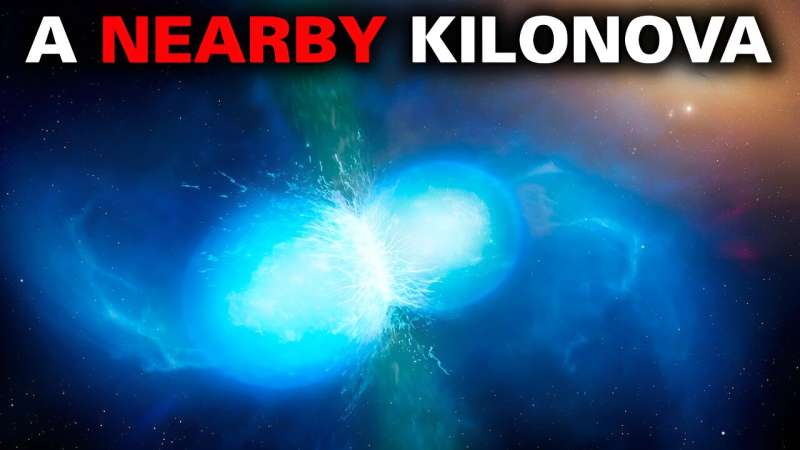This article has been reviewed according to Science X's editorial process and policies. Editors have highlighted the following attributes while ensuring the content's credibility:
fact-checked
preprint
trusted source
proofread
Scientists find evidence of a nearby kilonova 3.5 million years ago

Most of the times astronomers reported dramatic, cataclysmic events like neutron star mergers or the creation of a black hole; they are taking place light years away, typically in in another galaxy. While we can observe their destructive power through the light they emit, they have minimal impact on Earth. However, a relatively recent discovery of certain types of isotopes at the bottom of the ocean hints at one of these events happening fairly close to home. And it probably didn't happen all that long ago.
So, how can isotopes at the bottom of the ocean determine that a catastrophic event happened nearby recently? In the case of some elements, very few processes in the universe can create them naturally. Two of those—Fe-60 and Pu-244—were found in ocean sediments dating back 3–4 million years ago.
Fe-60 can, in theory, be created in a regular supernova. While still powerful, these events aren't the universe-shaking cataclysms we can see from far away. However, Pu-244 is thought to be created only in those extraordinary events. In particular, the creation of this plutonium isotope only happens in specific classes of supernovae, such as a kilonova or the merger of at least one neutron star with something else.
Scientists have already looked at the ratios of these two isotopes and determined that a single binary neutron star merger wouldn't have created the observed data. However, a new paper from physicists at the Universita di Trento found that, with a specific debris ejection pattern and a certain tilt of the merger event as it happened, the ratio of iron to plutonium isotopes could be explained by a phenomenon known as a "kilonova," which is created when either two neutron stars or a neutron star and a black hole collide.
A critical feature of the data was that these isotopes hadn't yet decayed. Pu-244 has a half-life of 81 million years, while Fe-60's is only 1.5 million years. Combining the known age of the sediment with the available half-life of these elements allowed the scientists to determine the ratio that lies at the heart of the paper, now posted to the arXiv preprint server.
Other papers have proposed that different rare types of supernovae could have created the plutonium/iron ratio in the sediment sample. These include events like a magneto-rotational supernova or collapsar; however, the paper shows that neither of these could have been the source.
That leaves a kilonova as the most likely source, but what about the research that found it impossible to explain the isotope ratio? Several factors play into the scenario where a kilonova explanation begins to make sense. First, one type of gravitational collapse during the merger creates strong "spiral-wave" winds, which eject much more matter from the kilonova.
Along with that gravitational collapse, neutrino bombardment of the eject could create the Pu-244 in quantities similar to those found on the ocean floor. The researchers ran a series of simulations that proved such a ratio was possible—but found it only was if the kilonova was slightly askew with respect to Earth—the ratio only made sense if the wind from the mid-to-high-latitudes were what hit our planet.
It, therefore, seems that a single kilonova could explain the existence of Fe-60 and Pu-244 in our oceans. And since those isotopes showed up in sediment that was created between 3 and 4 million years ago, it seems likely that the kilonova happened then. But how far away was it?
To calculate that, the researchers calculated the different spreads they would expect for each element based on the wind speed created by the kilonova. The answer, it seems, was about 150–200 parsecs away—about 500–600 light years. That's basically right in our backyard in astronomical terms.
The good news is that, obviously, this event didn't cause the end of all life on Earth. And we don't see any good candidates for such a dramatic event nearby anytime in the next few million years. But research like this provides a good reminder that the universe is dangerous, and sometimes dangerous things happen uncomfortably close to our pale blue dot.
More information: Leonardo Chiesa et al, Did a kilonova set off in our Galactic backyard 3.5 Myr ago?, arXiv (2023). DOI: 10.48550/arxiv.2311.17159
Journal information: arXiv
Provided by Universe Today




















